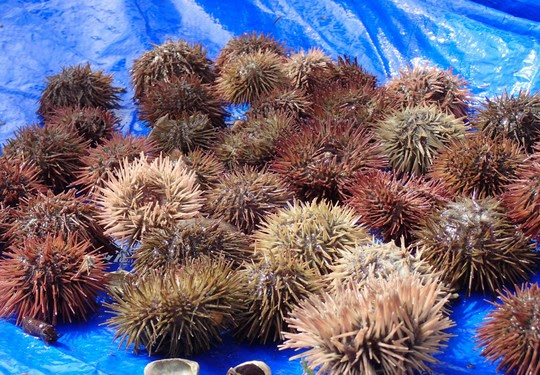Bring your own boat, gloves, and snorkeling gear and join Florida Fish and Wildlife Conservation Commission (FWC) in removing sea urchins from seagrass beds. FWC will provide maps and gps locations showing where to collect urchins and buckets to put them in. Return buckets filled with urchins to our check-in station and get some swag. Staff will relocate the urchins to deeper water away from seagrass. Check-in begins at 8:00 a.m.,May 22, 2021 and all urchins must be turned in by 5:00 p.m. Please check in with an FWC or DEP employee to get your bucket and sign a volunteer waiver. Urchins should be returned in this bucket with seawater to be safely relocated by FWC or DEP employees. Rain date is June 5, 2021. For more information about the event, email StJoeBayUrchins@myfwc.com
About:
St. Joseph Bay, located in Gulf County in the Panhandle, once contained extensive beds of seagrass and supported an abundant scallop fishery. Residents and visitors enjoyed extensive, pristine seagrass beds and clear bay waters. Summertime recreational scallop harvesting contributed greatly to the local economy. Seagrass beds in the bay are dominated by turtle grass which also provide food for abundant green sea turtles. The scallop fishery has become depleted in recent years, algal blooms are more frequent, and the acreage of seagrass beds has decreased. An overabundance of sea urchins (Lytechinus spp.) continues to destroy turtle grass beds through overgrazing. This project will jump start natural recovery of seagrass by installing exclosures over grazed areas to allow seagrasses to grow back without sea urchin grazing pressure. In addition, sea urchin roundups, public outreach events, will involve citizens to remove sea urchins from active grazing fronts. The animals will be released in deeper areas of the bay at a distance from grazed areas.
This project is a partnership between FWRI and the Central Panhandle Aquatic Preserves of the Florida Department of Environmental Protection. Staff from both agencies are maintaining the exclosures, monitoring the abundance of sea urchins quarterly, assessing sea grass abundance by in-water and mapping surveys, and measuring water quality monthly.

